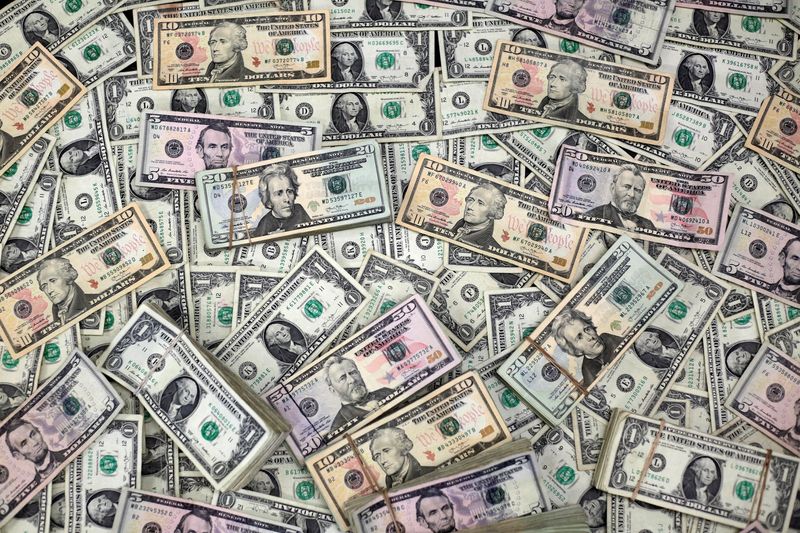Select Language

The U.S. dollar weakened on Monday, as investors eyed the prospect of a federal government shutdown as well as a slate of fresh U.S. economic data points this week.
By 05:35 ET (09:35 GMT), the U.S. dollar index, which tracks the greenback against a basket of currency peers, had fallen by 0.2% to 97.92.
Attention is turning to the unveiling of September’s nonfarm payrolls report on Friday, which could provide a glimpse into the state of the American labor market.
Supporting a cooling jobs picture has been a major focus for Federal Reserve policymakers. When the central bank slashed interest rates by 25 basis points earlier this month, officials widely suggested that a need to prioritize the slowing employment situation over signs of sticky inflation.
A collection of rate projections from the Fed also showed that many members are anticipating further drawdowns before the end of the year. In theory, cutting rates can spur on investment and hiring, albeit at the risk of driving up prices.
Economists are anticipating that the U.S. added 51,000 roles this month, compared to 22,000 in August. The unemployment rate, meanwhile, is tipped to equal August’s level of 4.3%.
Observers have predicted that, given elevated inflation data, a strong jobs report could persuade the Fed to roll out further rate cuts at a more measured pace.
Traders are currently pricing in roughly 40 basis points of Fed easing by the end of 2025, around 25 basis points below the level seen earlier this month. This slight pullback in expectations for Fed rate cuts, helped give lift to the dollar last week.
"A jobs number [less than] 75,000 will probably keep the Fed on track for a [...] cut [at its next meeting on October 29], but something [greater than] 115K with the core PCE just below 3% could spur" Fed Chair Jerome Powell and his colleagues to skip a reduction at the gathering, analysts at Vital Knowledge said in a note.
Yet worries remain that a possible U.S. government shutdown this week may delay the publication of the jobs numbers.
Congressional lawmakers are currently facing an impending deadline to pass a stopgap funding bill before the fiscal year ends on Tuesday. If the federal government would enter its 15th partial shuttering since 1981.
Republicans currently control both chambers of Congress, although the votes of some opposition Democrats would be needed to pass the legislation. However, Democrats have so far rejected a short-term bill, calling for any potential bill to reverse Republican reductions to health care programs.
Leaders from both parties in Congress are due to meet with President Donald Trump -- a Republican -- at the White House on Monday to discuss the matter. Speaking to Reuters over the weekend, Trump said he has "the impression" that Democrats may want to reach an agreement.
Elsewhere, analysts are keeping tabs on a legal battle over the possible dismissal of Fed Governor Lisa Cook by the Trump administration, which have exacerbated concerns over the independence of the central bank.

